We all have ideas for things we want to improve. Maybe you want to learn about investing so you can manage your finances better. Maybe you want to learn about how to build good fitness habits, so you can stay in shape. Maybe you want to build skills for your career, learn new subjects or otherwise become a smarter, better version of yourself.
Unfortunately, for a lot of people, their process of improvement looks like this:
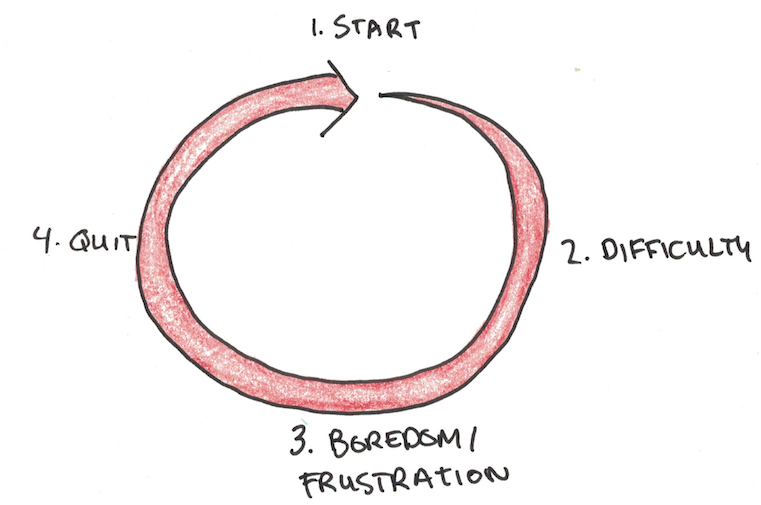
They start out with some ideas. They get excited for a week or two. Maybe they even take some early steps into doing something about it. But, their enthusiasm wanes and eventually their project gets abandoned and they’re right back where they started. Their path is a circle.
On the other hand you have people whose path of improvement looks like this:
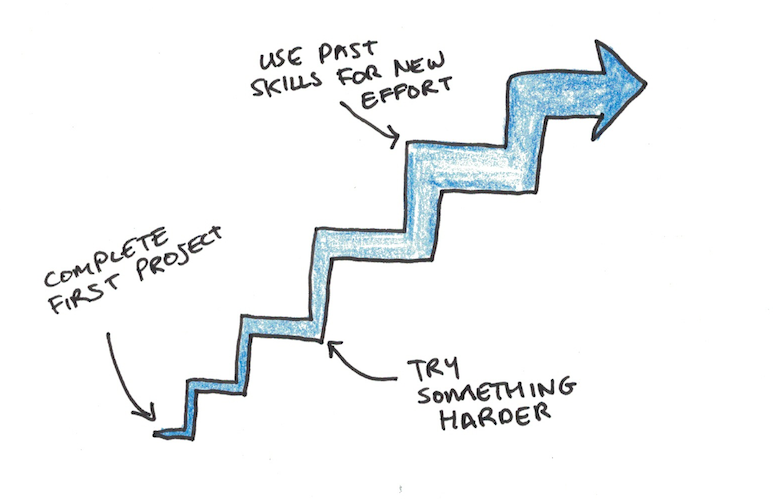
They get an idea. Instead of daydreaming, they construct a specific, short-term project. Once they accomplish that, they move on to a new idea and a new project. Each project builds on the last, expanding options. Before long, they’re getting opportunities to do things they couldn’t have imagined at the start. Their path is a staircase.
What Defines the Shape of Your Path?
I think there’s a few factors that determine whether you make consistent progress or spin around in circles:
1. Do you focus on one thing at a time to completion?
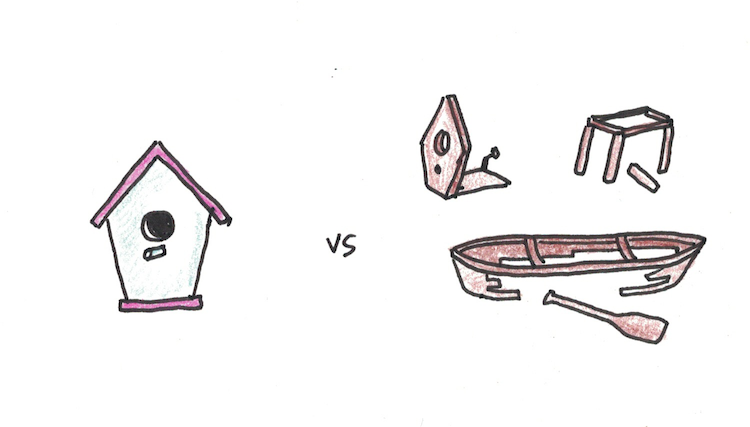
Juggling multiple goals and interests is fine when those projects are easy. But distracted focus doesn’t work when projects are hard. Unfortunately, climbing stairs is hard work.
The person who does one project at a time, finishing them before starting the next, will make infinitely more progress than the person who does dozens of projects at a time, but never really makes much progress on any of them.
2. Do you have the right method to make it work?
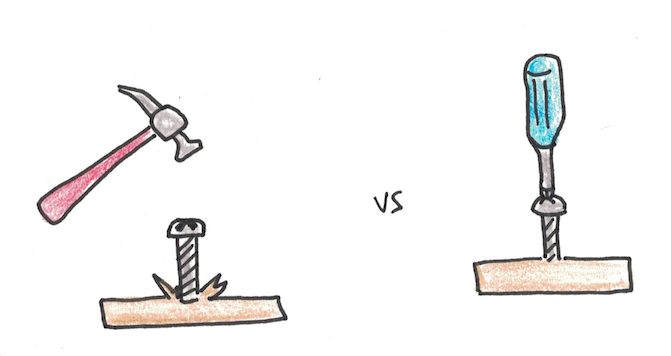
Doing something that’s outside the orbit of your usual routine requires not just commitment, but new methods. Almost by definition, if you already knew how to do it, you’d have done it already.
The people I most admire for constant climbing are always acquiring new methods. They get these from reading books, taking courses, conversations with people who know more and experimentation on their own. Thinking you already know the best way guarantees you can’t find a better one.
3. Do you enjoy actualization more than possibility?
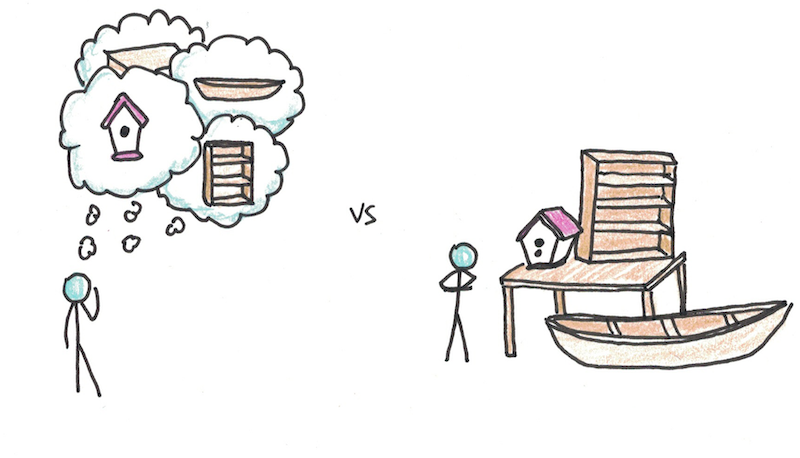
Daydreaming can be fun. It’s certainly a lot less work. For some, the idea of a goal is always more exciting than actually reaching it.
There’s some truth to this. When you achieve most goals, you often find that they don’t seem as special as when you first imagined them. The magic trick feels less magical, once you know how it’s done.
But there’s a different kind of satisfaction that comes from reaching goals. The more you can attune your life to the joys of doing and actualizing, over daydreaming and philosophizing, the more solid your life’s foundation will become.
Take Action Today
As a final exercise for my course Rapid Learner, I want you to think of all the projects and ideas you’ve had in the last couple of years to work on. Then I want you to write down how many of those you actually completed.
No need to share this one, this exercise is just for you.
My purpose in this exercise isn’t to argue you should actualize every notion you’ve ever had. That’s impossible. If you’re doing it right, the number of completed projects will always be a lot less than your possible ideas.
Instead, I want to note how often we not only do far less than we imagine we would, we often do far less than we reasonably could. This isn’t to guilt or shame, but to be optimistic about our future potential. Even a small bump in your completed projects can accumulate into a mountain over time. Start building yours today.


 I'm a Wall Street Journal bestselling author, podcast host, computer programmer and an avid reader. Since 2006, I've published weekly essays on this website to help people like you learn and think better. My work has been featured in The New York Times, BBC, TEDx, Pocket, Business Insider and more. I don't promise I have all the answers, just a place to start.
I'm a Wall Street Journal bestselling author, podcast host, computer programmer and an avid reader. Since 2006, I've published weekly essays on this website to help people like you learn and think better. My work has been featured in The New York Times, BBC, TEDx, Pocket, Business Insider and more. I don't promise I have all the answers, just a place to start.